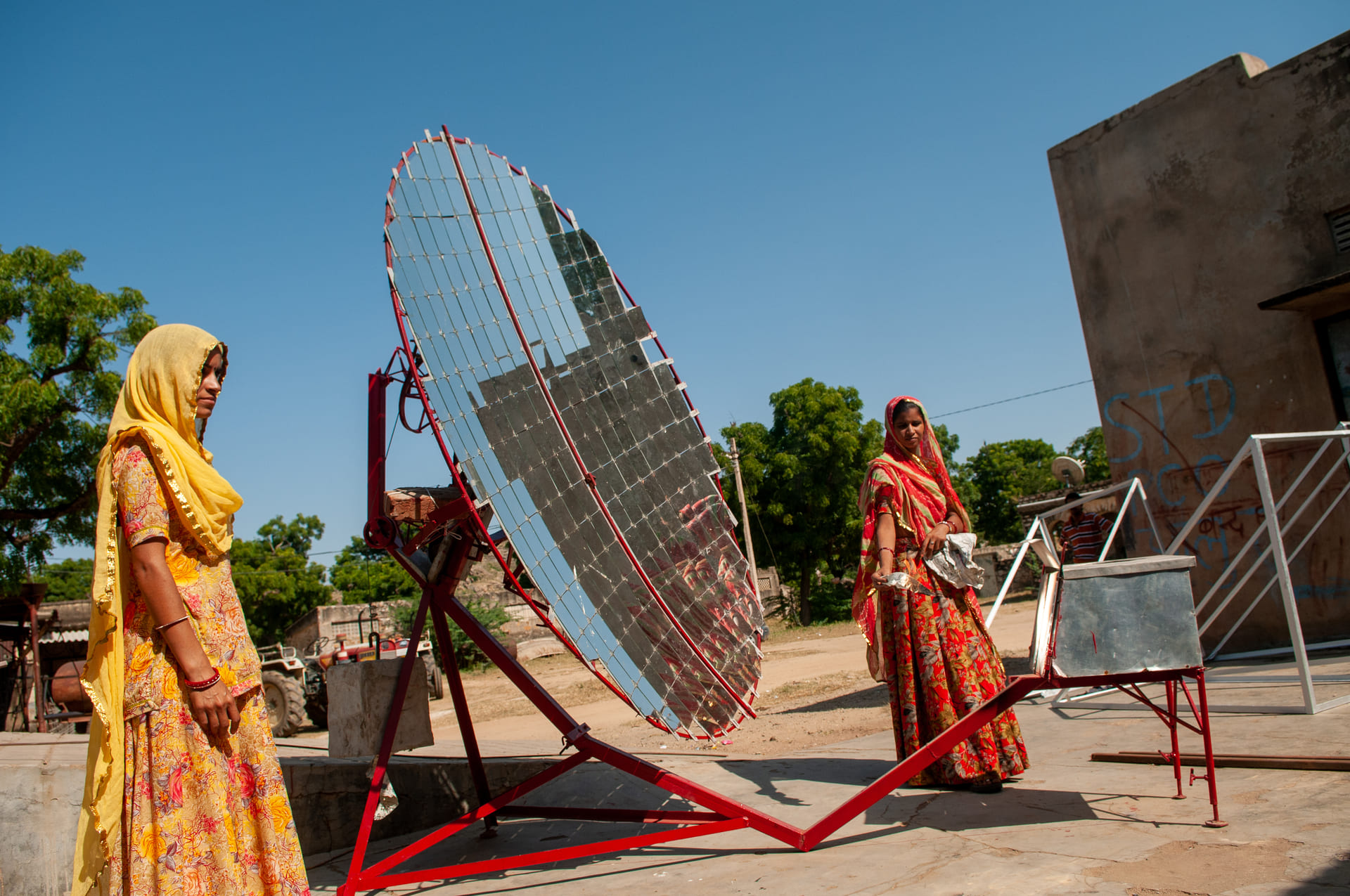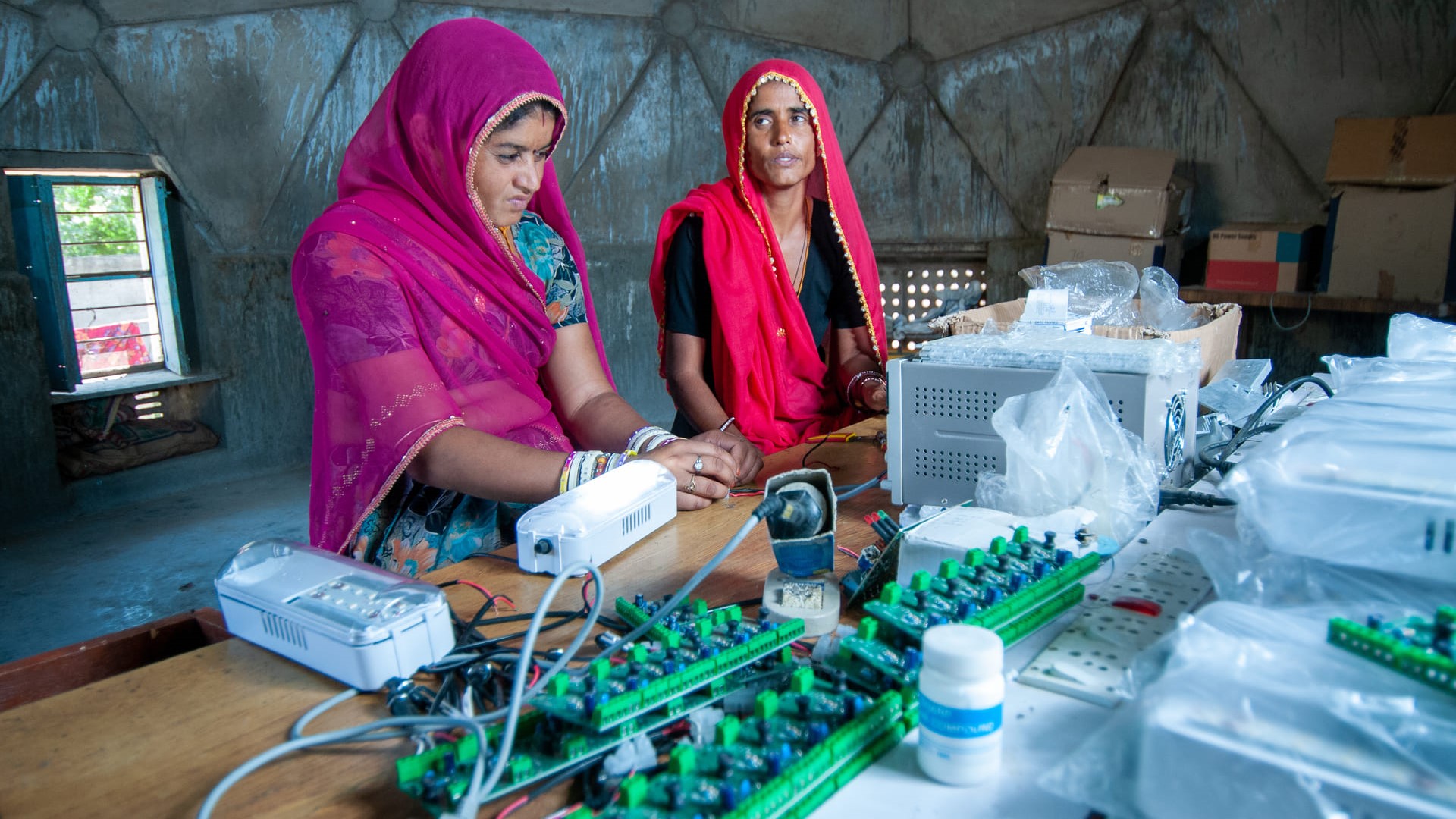Affordable and clean energy in India
India is a country with a huge energy deficit. More than 300 million rural inhabitants have no commercial electricity. There is a widespread dependence on imported fossil fuels. However, ambitious government investment in renewables is set to turn this around.

175 GW renewable energy by the end of 2022
The Indian government has set an ambitious target of 175GW renewables by 2022, which includes a $100bn investment in a utility-scale project. Reaching this goal will see a sharp increase from the 2015 target of 39GW. A second $50bn investment goal of 40GW by 2022 applies to small energy grids and rooftop solar initiatives. These projects aim to reduce pollution, cut dependence on imported fuels, increase renewable energy supplies in cities and bring reliable, clean energy to rural areas. Smaller-scale NGO efforts include innovative solar-charging centres that will potentially transform the lives of over 200 million residents of informal settlements.
Clean energy for more than 18,000 villages
In rural India, where electricity is either intermittent or absent altogether, residents have little choice but to use expensive and polluting fuels like kerosene and firewood. The government’s mandate is to electrify more than 18,000 villages with clean energy initiatives such as solar roofs. The solar rooftop industry has become the fastest growing segment of the energy sector and requires no costly infrastructure investment.

Increase of renewable sources in 48 solar cities
India’s urban areas emit high quantities of greenhouse gasses and suffer from electricity shortages. The government has identified 48 solar cities in which to develop energy conservation and increase capacities from renewable sources such as wind, solar, biomass and small hydro. Projects such as solar water heating for homes, hotels and hospitals, or industrial waste-to-energy plans, are designed to pave the transition toward clean energy across the nation.
Toward net-zero emissions by 2070
Looking forward, India has announced ambitious plans to fulfil 50% of its energy needs – about 500GW – with renewable energy (RE) by 2030. The “Mission 500GW” plan demands an increase of 30-40GW per year from current capacity over the next nine years, delivered via a combination of solar, wind and other hybrid energy sources. This goal will require a monumental effort to transition away from India’s largely coal-based economy but will serve as springboard for its long-term commitment toward net-zero emissions by 2070. If India succeeds in meeting these milestones, it will lead other South Asian nations in the fight against climate change and move the region and the world closer to achieving carbon neutrality.
Industrial sectors
- Agriculture, forestry and fishing
- Manufacturing
- Electricity, gas, steam and air conditioning supply
- Construction
- Activities of extraterritorial organizations and bodies
Habitat at the New European Bauhaus Festival and the STI Forum
This story is part of “Habitat: Embracing change in the post-2030 future”. Habitat was discussed at the side event “New habitats for the post-2030 future” during the New European Bauhaus Festival on 10 June 2022. At the STI Forum of 2023, a science policy brief recommendation on Habitat was published under the category “science-policy-society interface”: Enablers for transformative change to sustain people and nature-centred world. Download recommendation >
Contribution to story
- This is “HABITAT: Embracing Change in the Post 2030 Future” Exhibition designed and curated by Dr Sandra Piesik, 3 ideas B.V in collaboration with HABITAT Coalition and VITO
- Copy editing by Katleen Vandormael, Communication Manager G-STIC, VITO
- Cover image: Women constructing solar cookers at the workshop of Barefoot College in Tilonia, Rajasthan, India © PradeepGaurs, Shutterstock
- “HABITAT: Vernacular Architecture for a Changing Planet” published by Thames & Hudson
- “HABITAT: Vernacular Architecture for a Changing Planet” published by Abrams
- “Habitat: Traditionelle Bauweisen für den globalen Wandel” published by DETAIL Special
- “Habiter la planète: Atlas mondial de l'architecture vernaculaire” published by Flammarion First Prize Winner at “J’aime le livre d’art”, Paris 2017
- “HABITAT: Arquitectura vernácula para un planeta cambiante” published by Blume
- “HABITAT: Vernacular Architecture for a Changing Climate’ published by Thames & Hudson UK, USA, and Shufuhsa
